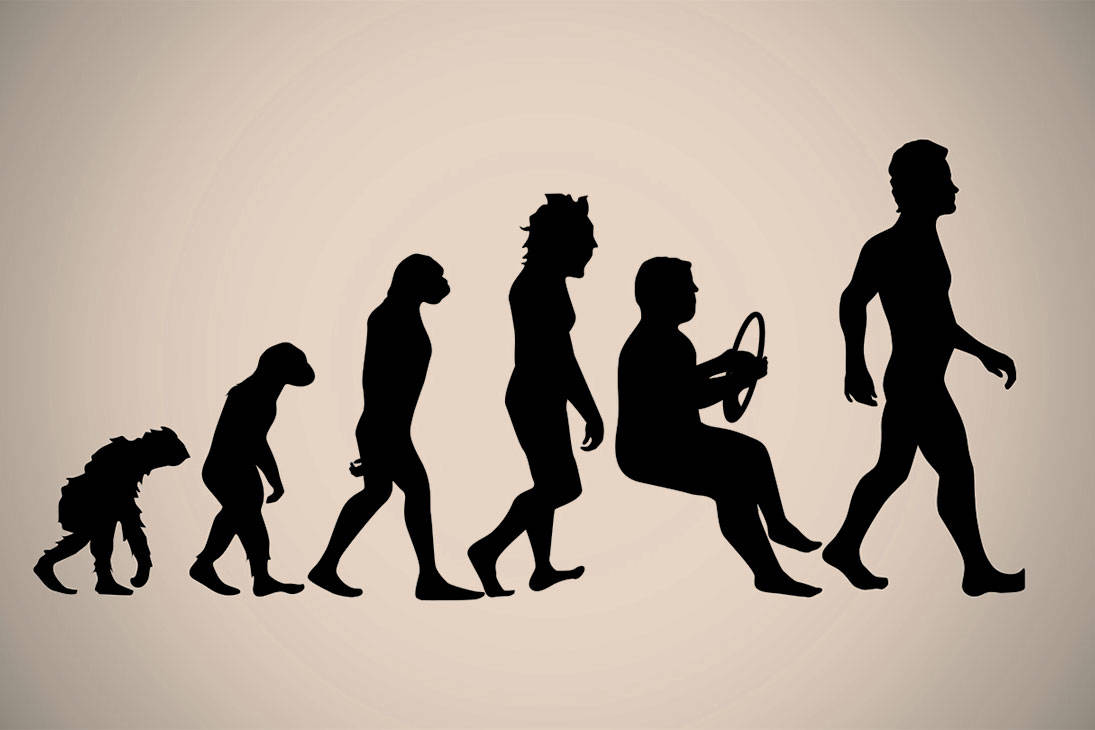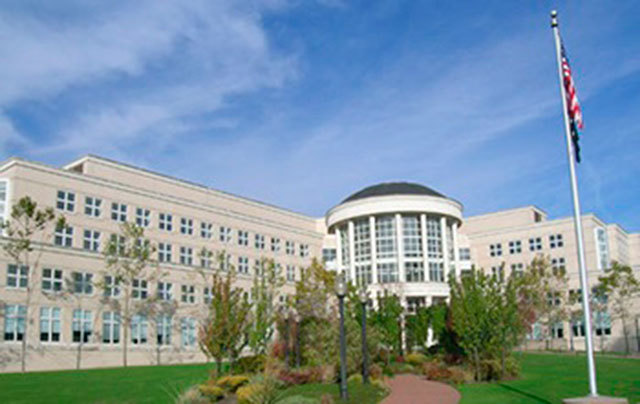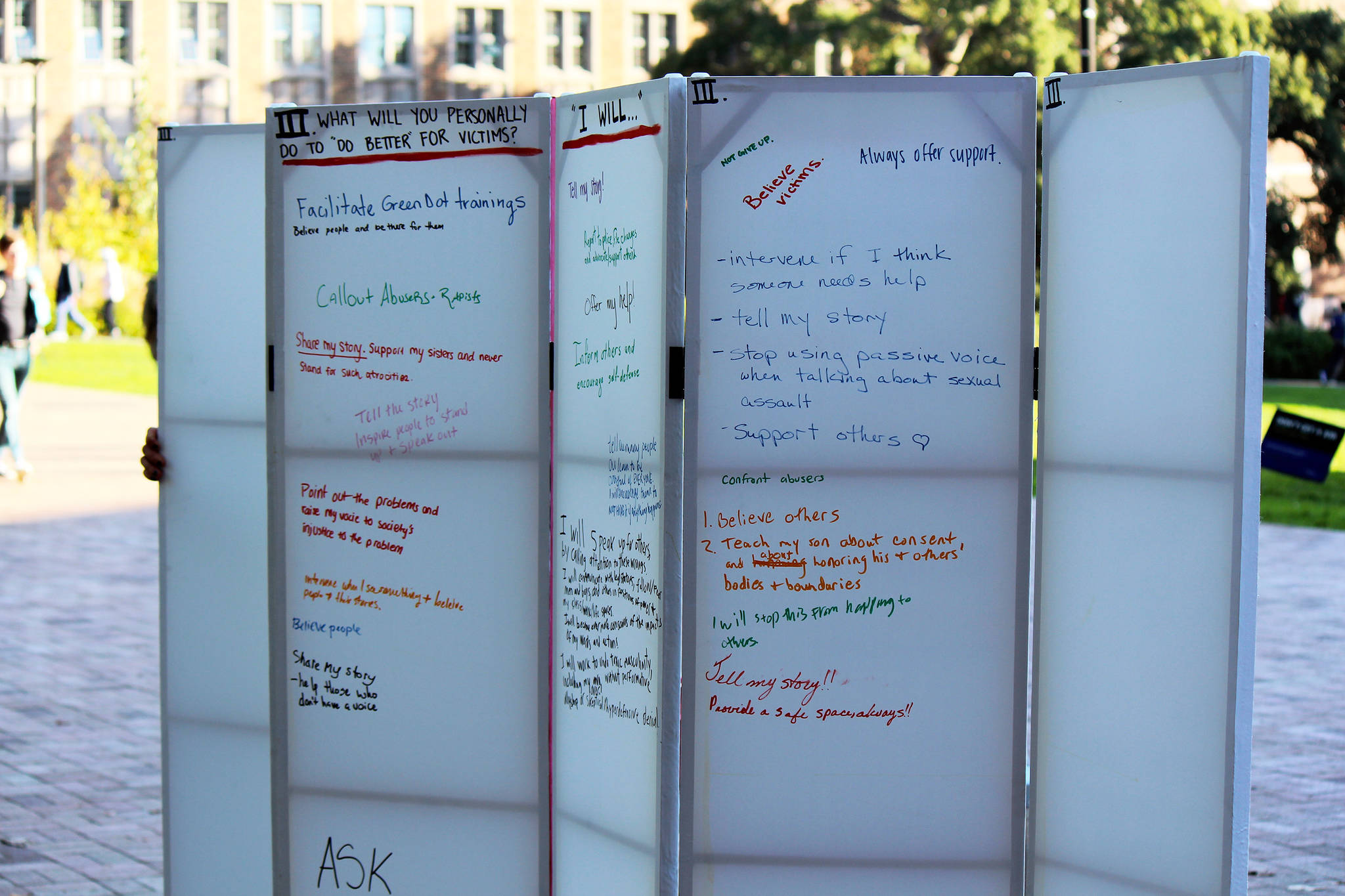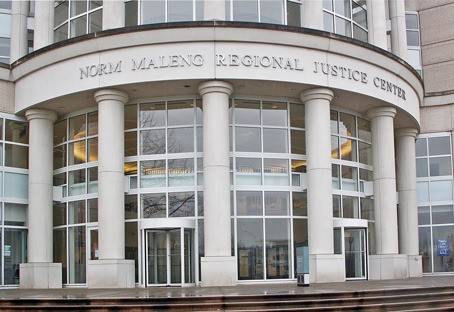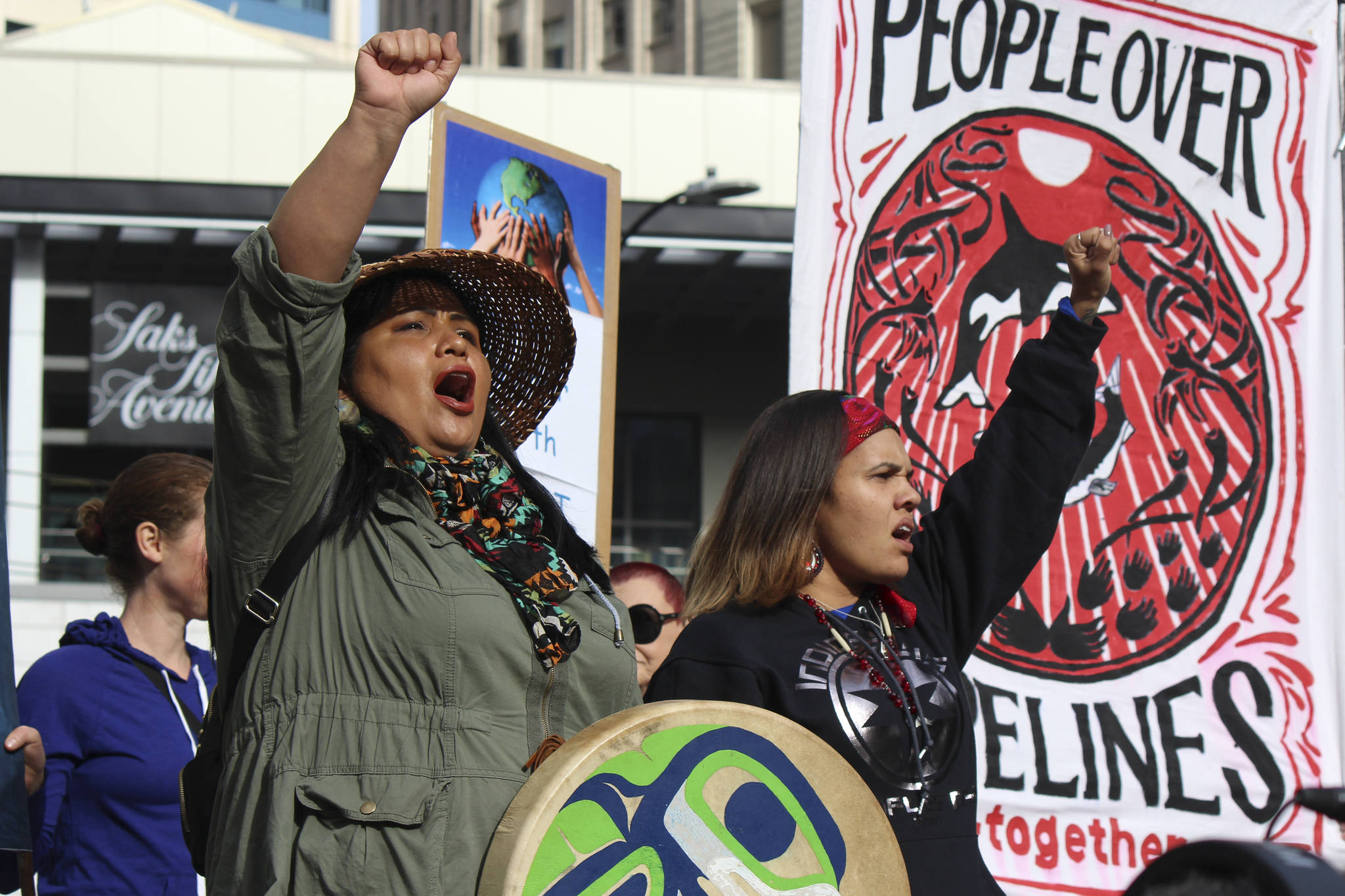It’s a Thursday afternoon in Seattle and I’m in the driver’s seat. It’s 4:45 p.m. and I am gripping the wheel of an old first-generation Prius, sweating and panicking, cursing a lot, and completely immobile. I had foolishly made an appointment for 5 p.m. way up on Aurora Avenue and imagined—in a fugue state, apparently—that I could get there on time if I left the Central District by 4 p.m.
But no. I sit, and sit, and sit, as red lights turn green, then red again; I get onto I-5 and off I-5, onto 99 and off 99. I try side streets, I try main streets, I try everything I can think of, and still I barely move. I’m driving a vehicle that can easily hit speeds of 80 or 90 mph, but people are passing me on foot. A thousand cars are lined up behind me and around me and in front of me—a steel blockade, an armored fortress. I am trapped, suffocating, desperate, and utterly convinced (as I often am in traffic) that this is a moment of pure, existential reckoning: I am being punished for my decisions and this gridlock purgatory is a metaphor for my life.
That is pretty much why, even when I had a car, I didn’t drive much in Seattle.
And sure, this kind of reaction doesn’t come out of nowhere; it’s more the result of a slow, steady drip that has spanned an early adulthood and crossed borders. For four years I commuted at least 45 minutes each way to a previous job in California—not always immobile, but often enough—during which I developed a mild form of traffic phobia. Struggling to find parking in the San Francisco Bay Area is another existential-crisis story entirely, and I’d often thrill at the opportunity to avoid it. As a result, I begged off driving when it wasn’t for work; I began biking more and more often.
Still, the car was a privilege. It got me to the mountains, it was a mini-storage unit when I was between sublets, and it shuttled me across town late at night and easily to friends’ houses in other towns. It provided me with a sense of independence and control. And, packed full of books and clothes and camping gear, it got me to Seattle.
Last May, after writing a feature about a climate-change protest in Anacortes, I drove up with a friend and our two bikes to cover the event as a reporter. We spent the night east of Bellingham, and the next morning drove to a park-and-ride near Chuckanut Drive, that undulating stretch of forested bluff so beloved by cyclists. We left the car and biked the 30 bucolic miles to March Point, where the Shell and Tesoro oil refineries stood glittering, and several thousand people had gathered to march, kayak, and camp on oil-train tracks to demand action on climate change.
I would have biked all the way from Seattle—or van-pooled—if I’d had more time. But when you’ve got a tight schedule, the single-occupancy combustion engine comes in very handy. Demonstrators filled March Point with speeches, salmon-shaped wind socks, and signs declaring “Climate Justice” and “100% Renewables.” Counter-protesters in a motor boat circled March Point with signs of their own, including “I love cheap gas” and the pointed “If you drove here, you’re a hypocrit” [sic].
At the end of the day, we made the 30-mile return trip under a chilly, sprinkling rain. When we arrived, and circled around the back of the car to hook our wet steeds to the rack, we gasped: The trunk was crumpled in like a tin can, the rear-left taillight completely shattered. I was panicky, then furious—until I saw a note tucked under the windshield wiper with a phone number and an insurance-policy number. The culprit was charming and polite, his insurance company responsive and professional, and I was able to drive back to Seattle all right, thanks to the weight of the two bikes holding the trunk closed. I dropped off the car at a repair shop, the insurance company gave me a rental, and I waited for everything to wrap up at no cost to me. No big deal.
But then one day, several weeks into the process, I was coolly informed that the cost of repairs was going to exceed the value of the car. Though a Prius, it was 15 years old, and worth very little. Here’s your check, I was told: So sorry about that, and have a nice day.
The poetic justice of this story is not lost on me. Car Totaled While Attending Climate-Change Protest. OK, universe. Message received. But at the time, I didn’t dwell on it. Instead I selfishly decided that it meant I could look for a beat-up Subaru, because I, like so many others in Seattle, wanted a car for really only one reason: to get to the mountains. Since quitting that commuter job in California, I had lived fairly “car-lite,” as local bike blogger Madi Carlson calls it. I was almost always on bike—to work, to the grocery store, to shows and events and friends’ houses. There were probably weeks at a time when the car sat idle at the curb, literally growing moss. I drove only when it was more convenient—on cold, rainy nights, when buying heavy stuff from Goodwill, or for hiking trips and the occasional reporting gig. At the end of a month, I would have totaled maybe 200 miles.
Nevertheless, I launched the Craigslist search for a used Subaru, of which there are at least a dozen posted each day in the region, and I quickly learned two things: One, buying a cheap car is a full-time job. Two, you need a car to buy a car. I’d see something that looked promising, but it would be in Lake Stevens or Gig Harbor or Puyallup, and if it was anything close to a good deal, it would be gone in a few hours. Even if I made it out to see one in person—which I managed only once, thanks to a kindly car-owning friend whom I bribed with a free meal—I’d still have to gauge the seller’s trustworthiness and maintenance records and the likelihood of price-gouging. The whole thing quickly turned into a giant, expensive pain in the ass. Soon enough, I stopped looking.
So, a year later, I still borrow cars, ride with friends who have cars, and once in a while rent a car, but, in the most traditional sense of the term, I am car-free. And as the term suggests, there is something very liberating about it. No pricey machine that I need to mind sits on the street near my home, nothing that demands hundreds of dollars from me out of the blue. I’ve since taken the bus longer distances, which has been surprisingly easy. I’ve biked longer distances, and in more inclement weather: not always so easy. All forms of transit have their moments of exasperation, of course; I’ve just come to believe that they’re rarely as maddening as the ones I experienced behind the wheel.
Exploring a car-free life is not a new concept. Naturally, in transit-rich metropolises like New York, London, or Tokyo, it is common, and there are practitioners in Seattle as well. Sightline Institute founder and director Alan Durning wrote extensively about it over a decade ago, for instance, in a series of astute and deeply philosophical blog posts detailing his family’s experience “living car-lessly” over the course of a year.
Most Seattleites, though, prefer to keep driving. The much-lauded and much-maligned ST3, which passed by majority vote in November and promises (among other things) 62 new miles of light rail and more bus rapid transit (BRT), won’t be complete until 2041. That’s a big part of the reason why, if you can afford a car in Seattle, you’re still likely to own one: In 2013, about 84 percent of the city’s households owned cars, compared to 44 percent in New York. And it’s not just the Gen-Xers and baby boomers keeping those numbers high. A survey of local millennials by the nonprofit Forterra, completed in December, found that about three-quarters of respondents own cars, and a majority rely on driving as their primary mode of transportation.
As a result, gridlock has become such a key feature in so many of our lives that The Seattle Times recently put the call out to commuters to see how they survive or escape it. Highway congestion jumped 95 percent between 2010 and 2015, according to WSDOT, and with the region’s population continuing to boom, it doesn’t seem to be getting much better.
The #1 thing I’ve learned in the past year of life without a car, then: There are so, so many cars. I can borrow them, rent them, or ride with friends in them. I love the wilderness, but because I don’t love skiing, the winter has been mostly bike rides and the occasional snow-tromp with car-owning friends. And during the summer, though I hiked and camped almost every weekend, I found myself renting a car only once—because, again, someone always had a car. I retain some guilt for the rides that many people have too graciously provided me, and yes, I have been putting off certain tasks because of the hassle required (getting a new mattress, say, or picking up garden soil). Still, the idea of having my own car has begun to feel quite redundant. Though I, and some of the half-dozen car-free Seattleites I spoke to for this story, sometimes desperately miss the spontaneity—waking up on a weekend morning and just deciding, last-minute, to take myself to the mountains some 80 miles away—living without your own vehicle is hardly impossible. It just takes a reframing of long-held beliefs, expectations, and planning styles: a kind of reorientation.
Of course, being able to afford a car in the first place—even a “cheap” car—is a privilege. Plenty of people without the means to own a car already know exactly what this orientation feels like. They’re already wise to the gifts and frustrations that carlessness can bestow. But for those who choose to forgo a vehicle, the frustrations often transform themselves into benefits; their sage descriptions start to sound, after a while, as if they could fill the pages of a self-help book.
Being car-free is about learning to live with uncertainty, they say. It’s about the radical acceptance of what is. It’s about finding adventures in small misfortunes, moving through the world more slowly and deliberately and with intention, rethinking your relationship to time and money and, ultimately, challenging the way you define “freedom.”
Traveling sans car forces you to “reset your expectations,” says Marley Blonskey, a local cyclist and blogger, to “change your mindset.” It makes things “so much more about the journey” than the destination. Bike-camping, for instance, means “an all-day adventure to get there, versus getting there as fast as you can.”
Carlessness is also about planning ahead for missteps, says U District resident Lindsey Bartley, such as getting on the wrong bus and going wildly off course, then “finding the Zen in it. Like, it’s OK I didn’t get to do that thing.” Then, no longer beholden to the vagaries of traffic and parking, “the city really opens up to you,” says Seattle Bike Blog creator Tom Fucoloro. It also creates a heightened awareness: You’re more conscious of the details of your surroundings and the people in it if you’re not in a sealed-off private pod. Many people point to the idea that cycling and transit “build community” in ways that our isolated boxes-on-wheels do not.
And in Seattle, it means “just accepting the fact that sometimes you’re gonna be wet, sometimes you’re gonna be cold,” says Blonskey. That is not my strong suit, but it’s a big deal among the car-free: embracing the weather as a kind of meditative practice. “It’s kind of a bummer in the rain, I won’t lie,” says Bartley, referring mostly to biking, although waiting at bus stops requires its own modicum of chill and damp. But she, like Blonskey, has resigned herself: “I’m gonna be wet! And that’s OK.” Local cyclist Zach Williams intones an old Norwegian adage for my benefit: “There’s no bad weather, just bad clothes.”
As Durning wrote in 2006, “So far, the biggest bonus of car-free living has been an added increment of mindfulness.”
In 2014, Times columnist Danny Westneat experimented with carlessness. He did not find mindfulness. Following the death of his 31-year-old Volvo, he committed to a car-free summer and reported that it was “terrible”—thanks, he joked, to Amazon. His route required him to take overpacked buses in South Lake Union, and “on one Calcutta-like evening, two buses in a row were too jammed to board.” The article wasn’t so much an indictment of Amazon or of crowds as of the city’s public-transit system, which is scrambling to keep up with growth. Westneat writes that he ended his bus-only experiment because he has “kids to ferry around,” which is understandable.
I don’t have kids or dogs, which simplifies things. Yet Carlson, now famous in Seattle for encouraging families to get on bikes, claims that going car-free with kids is really not at all as crazy as people think it might be—and there are unexpected benefits, like less bickering among siblings. “It takes some planning, but it doesn’t take that much planning, and the more we do the easier it is,” she says. For a long time she ferried her kids around on a cargo bike, and these days they often bike too—or bike-and-bus, as they do when traveling from Greenlake to Issaquah for the orthodontist. Bartley, who is expecting her first child this summer, has already been practicing biking with a sack of flour in her baby-bike seat; and though taking the family’s two 45-pound dogs in a bike trailer to the far-away dog park doesn’t happen that often, for obvious reasons, in Seattle you are allowed to take dogs on the bus.
Still, in Westneat’s eyes, “relying on mass transit here—on the bus—can slowly turn you into a second-class citizen.”
The idea that car ownership represents first-class citizenship is very real in the U.S. It was perhaps born—or at least solidified—in the 1950s, when the U.S. manufactured more vehicles than any other country in the world, one in six American workers were employed either directly or indirectly by the automotive industry, and several decades of auto-industry lobbying had prompted the federal government to invest billions of dollars in an interstate highway system. This was also the dawn of urban sprawl and the demise of most of the country’s public streetcars. The expectation that we’d all be able to choose exactly when and how we got anywhere, and that driving our cars on the new roads would be free (hence the term “freeway”), became an American ideal. The notion that there’d be any uncertainty or bald discomfort in the way that we get around town—cramming onto buses, say—runs anathema to the Henry Ford ethos that every hard-working American should be able to own a car.
This attitude is changing—take, for instance, the rapid growth of car-sharing options like Car2Go, Zipcar, and Turo. But still: Much of the region and the country is built around car ownership, both structurally and culturally. The personal automobile has, for many of us, long represented independence, access, and adulthood—a sign of material success.
Carlson—car-free now, but car-lite for many years, biking her kids to preschool even in the dark and rain and slush and only occasionally using the family car for very select trips—says that when she’s biking around town, “I’ve been mistaken for homeless, twice—that I know of.” Once, she says, a man in a car rolled down his window and offered her a five-dollar bill; another time, after conversing about her cargo bike with a woman in a minivan in the parking lot of a thrift store, she returned to find a large Ziploc bag full of socks, beef jerky, and bottled water perched on the handlebars. Before Seattle, Carlson lived in Las Vegas, where, when she walked, people would pull over and ask if she’d run out of gas. She says she has friends in Southern California who bike everywhere—voluntarily—but everyone assumes they have DUIs. She grew up visiting the Netherlands, where there are nearly as many bicycles as people, but here, “you’re kind of trained to think that you need a car,” she says. “Either you can’t afford one, or you have a DUI so you’re ‘stuck’ on a bike.”
When I had a car, I’d often drive to Olympia on Friday evenings to visit friends. The traffic was excruciating. I always crossed my fingers that maybe, just maybe, it wouldn’t be so bad this time, and it never worked. I’d always be stuck in a red-taillight-hued crawl for significant chunks of the drive, and it rarely took less than two and a half hours (without traffic, it should be about an hour and 15 minutes). I’d always arrive stiff-necked and agitated. When I no longer had a car, I learned that an express bus goes to Olympia for $3.75. I’d gaze out the window, breathe deeply, and listen to podcasts. It took two hours, but then when had a Friday-evening drive ever taken less than two hours?
For me, then, moving from car-lite to car-free was not really that painful. I’ve stood in the cold for 30 minutes waiting for a bus and been really, really mad about it. I’ve biked in the driving rain countless times, and, yes, I truly and desperately hate it—to-the-point-of-tears hate it. But somehow that soaking misery is not quite enough to make me want to spend thousands on a car, which, now that I don’t have one, seems like an utterly insane sum.
The way we tend to think about money, though, does present a particularly difficult challenge when it comes to carlessness. Although I haven’t rented cars all that much yet—really just once for a three-day camping trip—I know it’s going to feel excruciating to throw down $50 to $100 just for a day hike (the day-rate for a Zipcar, for example, is around $80). When you have a car, the hike feels free—it feels like the cost of gas only. But that’s a false narrative I’d been selling myself for a long time. The fact is that, even if I rented cars every other weekend, it would likely still be cheaper for me than buying and owning a car.
Rob Harrison, a local green-building architect, says he’s spent more of his life without a car than with one, in part for environmental reasons and in part for financial ones. He’s trying car ownership on for size right now (he just bought a used car in November), but the math does not add up: He pays $150 a month for parking alone and $100 a month for insurance, not to mention the cost of the car itself and the gas and the occasional maintenance. “$250 a month? I can do a lot of Lyft-ing and Zipcar-ing for that amount of money,” he says. Fucoloro, who sold his car to move to Seattle in 2009, says that as an independent journalist, “there is no way I would be living in Seattle right now if I owned a car. It would in no way fit in my budget.”
AAA estimates that car ownership costs the average American almost $9,000 a year—for car payments, insurance payments, the inevitable maintenance, depreciation, gas, and, of course, parking. On average, there are about 1.8 cars per American household, and most of them spend a whopping 95 percent of their lives parked. I know mine did. With Seattle growing less and less hospitable to parked cars, the cost—and the hassle—is becoming more and more untenable.
For example, when Bartley and her husband moved to the U District last summer from a very car-lite household in Washington, D.C., the plan had been to keep the car for a few months at least. But their building didn’t come with parking, even at a price. So they had no choice but to put their car on the street, playing musical chairs and filling the meter every four hours. That charade lasted approximately four days. “I think we moved here on a Sunday, and by Friday [the car] was gone,” says Bartley. They sold it—something she hadn’t been able to convince her husband to do until it became clear what an absurd, wallet-emptying headache the thing was going to be. “That convinced him. I didn’t have to say all that much other than, ‘Sweetie, you gotta go pay for the car now.’ ”
When I moved to Seattle a few years ago, I didn’t know many people, but wanted nothing more than to go hiking incessantly. I would pore over the Washington Trails Association website, take my little Prius on potholed forested roads, and scramble up every mountain I could find within an hour or two of Seattle every single weekend. That solitude, that spontaneity—it required almost no planning. I felt independent and resourceful, empowered and utterly free; there was also ample street parking right in front of my house. This would never happen in California. That was the Golden Era.
“The one thing I really miss about privately owning a car,” agrees the car-free Williams, “is being able to get up to a trailhead whenever with no planning. Now it takes planning. That is my main and only regret with the car-free thing.”
Williams grew up in “the sticks outside of Poulsbo” so public transit was neither frequent nor reliable; in high school, for him, “a car meant freedom. You live far away from your friends.” He moved to Seattle for college and saved summer-job money to buy a cheap Saturn—“not high-quality, but you need a car, right?” This, he says, was “American culture throughout the 20th century: A car is your freedom—and your independence is tied into whether or not you own a car personally. You’re a loser, and you’re also stuck, if you don’t have one. But the reality these days is that cars take up a lot of space, and they get stuck.”
It seems that Williams, who now can often be spotted riding a tandem bike all over Seattle and Puget Sound with his wife, Caitlin, shares some of my gridlock phobia. “I had an internship that every once in a while involved driving from Seattle to the Eastside during rush hour,” he says. “I had that experience of being stuck in rush-hour traffic during a commute to the suburbs … that misery! … That was a big thing for me: … [to] plan my life around never having to do this.”
Fucoloro—now a proud, happy carless bicycle advocate—also grew up in the suburbs where “basically, you have to drive.” He got his license at 16, and one day, in high school, he got rear-ended by a semi. He didn’t get hurt, but “it scared the hell out of me,” he says. “I think that’s probably when I first started thinking, ‘You know what? Maybe a car is a ball and chain, and not actually a tool for freedom.’ ”
Since selling the car to move to Seattle, he hasn’t looked back. “I was really scared leading up to it,” he says. But “the second I handed [the buyer] the keys and we shook hands and he left … it felt amazing. It was like a huge weight off my shoulders. It felt empowering. I didn’t expect to feel that way. … That car, it was never again my problem. It was someone else’s problem.” And now, he is unequivocal, unrelenting. There are no regrets. “I have never once wanted a car since I sold it,” he says. “It has been 100 percent one of the best ideas I ever had.”
I ask Carlson, too, if she ever has any regrets, any car-withdrawal symptoms. Like Fucoloro, she says no, not at all: “I don’t remember ever having that.” She squinches her face, trying to search for a moment when she might have. But no: “I would so much rather be on a bike in the rain.”
I am not there yet, but at least I’m not sitting in traffic.
sbernard@seattleweekly.com
